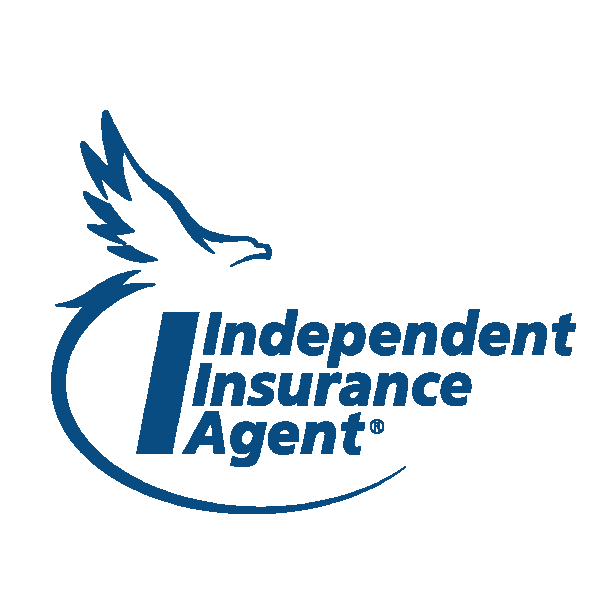Are Employees Driving Their Own Vehicles A Business Risk?
CHECK OUR PRICESMost businesses provide their employees with company-owned cars that they can use while working. But some don't do that. This is why some employees choose to use their own vehicles for business purposes. But what can businesses do in the case that their employees drive their own cars for business purposes? Is that a business risk? Yes.
If an employee gets into an accident, the business is at risk of financial liability. Businesses need to have the right knowledge about the guidelines applicable in such cases to run smoothly. They need to protect themselves and reduce their chances of suffering from losses.
This article will discuss if employees driving their own vehicles is a business risk and how non-owned auto insurance works.
What Are The Different Types of Business Risks?
Before we discuss the risks posed by employees driving their own vehicles, let’s take a look at some of the overall business risks you might face as a business owner:
Economic Risk: Fluctuating exchange rates, buying power, demand levels, and inflation are all risks that affect your business. Any negative economic events can also impact your sales levels negatively.
Compliance Risk: You have to comply with specific rules and regulations as a business owner. These include occupational safety and health laws and also environmental protection laws. You need to be well versed with all of these laws to save yourself from hefty penalties.
Security Risk: Information breach is a major risk that businesses face. Focusing on security solutions, fraud detection, and customer education can help you save yourself from these risks.
Financial Risk: Businesses need to keep an eye on interest rates and company debt levels to save themselves from the burden of financial problems.
Reputation Risk: Happy customers are the key to success for businesses. Companies must maintain their reputation to get as much business as possible.
Minimizing risks, bearing in mind safety standards, is very important to ensure business success. That said, what losses and risks can you face if your employees drive their own vehicles?
There is no doubt about how risky driving can be. Around 37,000 people in the US die in car accidents every year. Accidents while driving have become more common because people tend to be intoxicated while driving and end up speeding excessively, or getting distracted.
Businesses have now become increasingly careful about car accidents, as well. They can be fatal and can even cause great injuries to employees. As a result, they need insurance coverage to protect their cars and their employees.
In the case of company-maintained cars, businesses can opt for commercial auto insurance. However, if employees are driving their own vehicles for businesses purposes, they can opt for non-owned auto insurance.
What Are Non-Owned Autos?
In the insurance industry, non-owned autos are vehicles that are not under the company's name. If any employee uses their own vehicle for business errands, then that comes under non-owned autos. In the same way, if a business gives an employee some allowance for a personal vehicle, it would also count as part of non-owned autos.
Insurance for non-owned autos falls under an "excess" category. This means that the insurance company first pays for the employee's insurance as part of their basic insurance coverage. Then it pays for the non-owned auto as part of its "excess" policy.
Many a time, employers aren’t even aware of employees using their own vehicles for business. However, when an employee uses his own vehicle for business purposes, it puts the company in a disadvantaged position since the company is at risk of non-owned auto liability. A few situations when such exposure arises are when employees use their own vehicles for the following:
- Bank errands
- Sales calls
- Getting lunch
- Delivering goods to another place
So now on to the big question. Why is this a problem for businesses? Employers are held liable in such situations due to vicarious liability, negligence, or both. Let’s see what this means:
Vicarious Liability
If an employee gets into an accident when driving his own car for business-related work, the employer is held responsible for the accident. The rule here is that the employer is just as responsible for the accident as the employee since the accident happened under his supervision.
Negligence
Negligence can include a lack of proper training or no supervision. When a company hires someone as a driver or for work that involves a lot of driving, it is their responsibility to make sure that the person hired is a responsible driver.
This is applicable throughout the period that the person is employed. Employers also need to perform regular checks to ensure that employees drive cautiously when at work. On average, employers can face fines of up to $1 million for negligent hiring.
How Can You Minimize the Risk of Employees Driving Their Own Vehicles?
As a business owner, you need to minimize the risk associated with employees driving their own cars for business. Here are a few steps that you can take:
Identify Employees Driving Their Own Vehicles While at Work
The most crucial step here is to identify all employees who are using their own vehicles for business purposes. You can do this by keeping a regular check and informing employees about how and why they need to let the company know in case they are doing so.
Check the Driver’s License
It is imperative that you ensure that anyone driving for work purposes has a valid driving license. This is something you need to do to ensure your employee's safety as well as the safety of others on the road.
Personal Insurance for Vehicles
All employees who drive their own vehicles while at work should carry personal insurance. This should offer at least $500,000 in coverage.
Driver Safety Policy
The company should come up with safety guidelines that all employees have to follow when driving. These guidelines should be strictly enforced, and the company should take action against employees who don’t abide by these policies.
Effective Training
Employers need to guide employees about why they need to drive safely and how important it is for their own safety and the safety of the company.
Vehicle Safety Rules
Having vehicle safety rules in place is important to minimize the chances of accidents. The employees should agree to abide by these safety rules. The type of rules you enforce is up to you. However, they should at least incorporate the following:
- Employees should not drive if they have consumed alcohol
- Employees should not have taken any illegal drug or any other substance that can affect driving
- Employees should not use their mobile phones when driving
- In the case of an accident, the company should be informed immediately to avoid any further hassle
- Employees must adhere to all road safety rules and wear a seatbelt while driving
What Is a Non-Owned Auto Insurance Policy?
If employees are using their own cars for business-related work, then you need to protect yourself by having a non-owned auto insurance policy. In the case that the driver gets into an accident, this insurance policy can provide coverage.
For example, if an employee gets into an accident and rear-ends another car, non-owned auto coverage can help pay for damages to the other vehicle or driver. This policy can also provide medical cost coverage in case anyone gets hurt. Other legal expenses can also be covered with this policy.
However, there are a few things that this policy does not cover. Some of these are listed here:
- Damage to the non-owned vehicle that your employee was driving
- Medical bills if your employee gets injured
- Liability coverage for an accident due to any personal reasons
Commercial Auto Insurance versus Non-Owned Auto Insurance: What’s the Difference?
Commercial auto insurance covers vehicles that the business owns. If an employee gets into an accident when driving a company-owned car, then commercial auto insurance helps cover those damages. This insurance policy is required when a business owns vehicles under its name. It is definitely more expensive, but at the same time also offers greater coverage. Commercial auto insurance also provides coverage for any damage that is caused by accidents or vandalism when driving.
Non-owned auto insurance is required when employees drive their own cars for business-related tasks. This insurance is much cheaper than commercial insurance.
Do You Need Non-Owned Auto Insurance?
If you have employees who use their own vehicles for business purposes, then you definitely need a non-owned auto insurance policy to protect yourself. It can help pay for any damages that might happen. Most importantly, you need this coverage for your peace of mind. When you know you are covered, you won’t be worried while your employees use their own cars for business purposes. Furthermore, lawsuits can be very time-consuming and costly. Having this policy can help you save yourself from that too.
What Is the Cost of Non-Owned Auto Insurance?
There are several factors that affect the cost of non-owned auto insurance. Here are a few of these:
- The insurance provider
- Number of drivers
- Coverage limit
- Driving record
- Claims History
On average, it can cost you around $134 to $172 per month, based on all of these factors. Some insurance providers might also give you the option of adding this to your existing commercial insurance policy for around $10 a month. You need to get in touch with your insurance provider first to see what they have to say.
Tips to Buy a Non-Owned Auto Insurance Policy
If you plan on buying a non-owned auto insurance policy for your business, here are a few tips that can help:
Research: Do your research on the different insurance providers first to increase your chances of finding the best one
Identify Risks: Consider the number of employees you have and their driving record
Compare Rates: Get quotes from different insurance providers first, and then see which one fits your budget well
With these tips in mind, you are sure to find the best insurance provider for your business!
Final Thoughts
Car accidents can be quite dangerous. As a business owner, you need to protect yourself from any financial liability if your employees use their own vehicles for business purposes. To minimize this risk, you can ensure that employees follow all the rules and regulations laid out to them. It is also advisable that you train them properly and check their driving license.
Getting non-owned auto insurance is a wise idea since it can keep you covered properly. If an employee driving his own vehicle when at work gets into an accident, then this policy can keep you covered in the sense that it can pay for the damages done to the other vehicle.
It can cost you anywhere from $134 to $172 per month, depending on various factors, which include the number of drivers, the coverage limit, and your claims history.
Get in touch with your insurance provider to find out more about this!
Want help insuring your business?
Speak with a licensed agent today to discuss your options for the best insurance for your business.
Prefer to speak with an agent now?
Call: 505-933-6511
Ask an agent now!
Dax Kastrin
Owner of Elemental Risk Management
For over a decade, ERM founder Dax Kastrin has had a passion for providing excellence in the commercial insurance industry.






